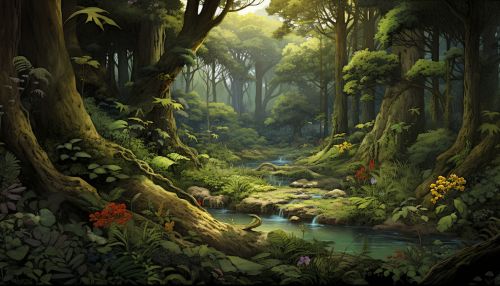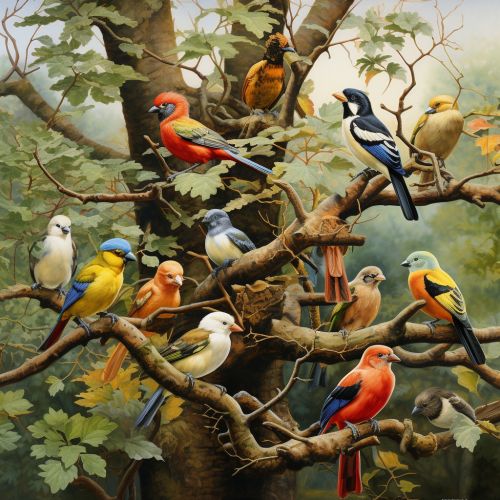Ecological niche
Definition and Overview
An ecological niche refers to the role and position a species has in its environment, how it meets its needs for food and shelter, how it survives, and how it reproduces. A niche includes all of the interactions of a species with the other members of its ecosystem. Ecosystems are composed of a variety of niches that species occupy to survive and reproduce.


Niche Concept
The concept of the ecological niche has evolved over time. The original niche concept was described by Joseph Grinnell in 1917, who considered a niche to be the habitat within which a species could survive. Charles Elton later expanded this concept in 1927, defining a niche as a species' role within an ecosystem, including its use of resources and relationships with other species. The modern niche concept, defined by G. Evelyn Hutchinson in 1957, incorporates both of these aspects, considering both the habitat of a species and its role within the ecosystem.
Niche Dimensions
The ecological niche of a species is multidimensional, encompassing a range of biotic and abiotic factors. These factors can be divided into three main categories: spatial (habitat), temporal (seasonality), and interactive (relationships and interactions with other species).


Spatial Niche
The spatial niche of a species refers to the physical space within which it lives and reproduces. This includes both the geographic range of a species, as well as the specific habitat types within that range that the species can occupy.
Temporal Niche
The temporal niche of a species refers to the timing of its activities. This can include the time of day or night that a species is active, the seasons in which it is active, and the timing of its reproductive cycles.
Interactive Niche
The interactive niche of a species refers to its relationships and interactions with other species within its ecosystem. This includes its role in food chains and food webs, its relationships with predators and prey, and its interactions with other species for resources and habitat.
Niche Differentiation and Specialization
Niche differentiation, also known as niche partitioning or resource partitioning, is the process by which competing species use the environment differently in a way that helps them to coexist. This differentiation can occur in various ways, such as through differences in habitat use, feeding habits, or activity patterns.


Niche specialization, on the other hand, refers to the adaptation of a species to a specific way of life or habitat, resulting in a narrow niche.
Fundamental and Realized Niches
The fundamental niche of a species includes all the environmental conditions under which a species is able to survive and reproduce. The realized niche, on the other hand, is the set of conditions actually used by the species, after interactions with other species (such as competition and predation) have been taken into account.
Niche Construction
Niche construction is the process by which organisms, through their activities and choices, modify their own and other species' niches. This can involve physical modifications to the environment, changes in the availability of resources, or alterations in the range of environmental conditions that the species can tolerate.


Ecological Niche Modelling
Ecological niche modelling is a method used in ecology to predict the distribution of species based on environmental conditions at locations where they are known to occur. This method is increasingly used in conservation biology, especially in the development of strategies to combat the effects of climate change on biodiversity.
